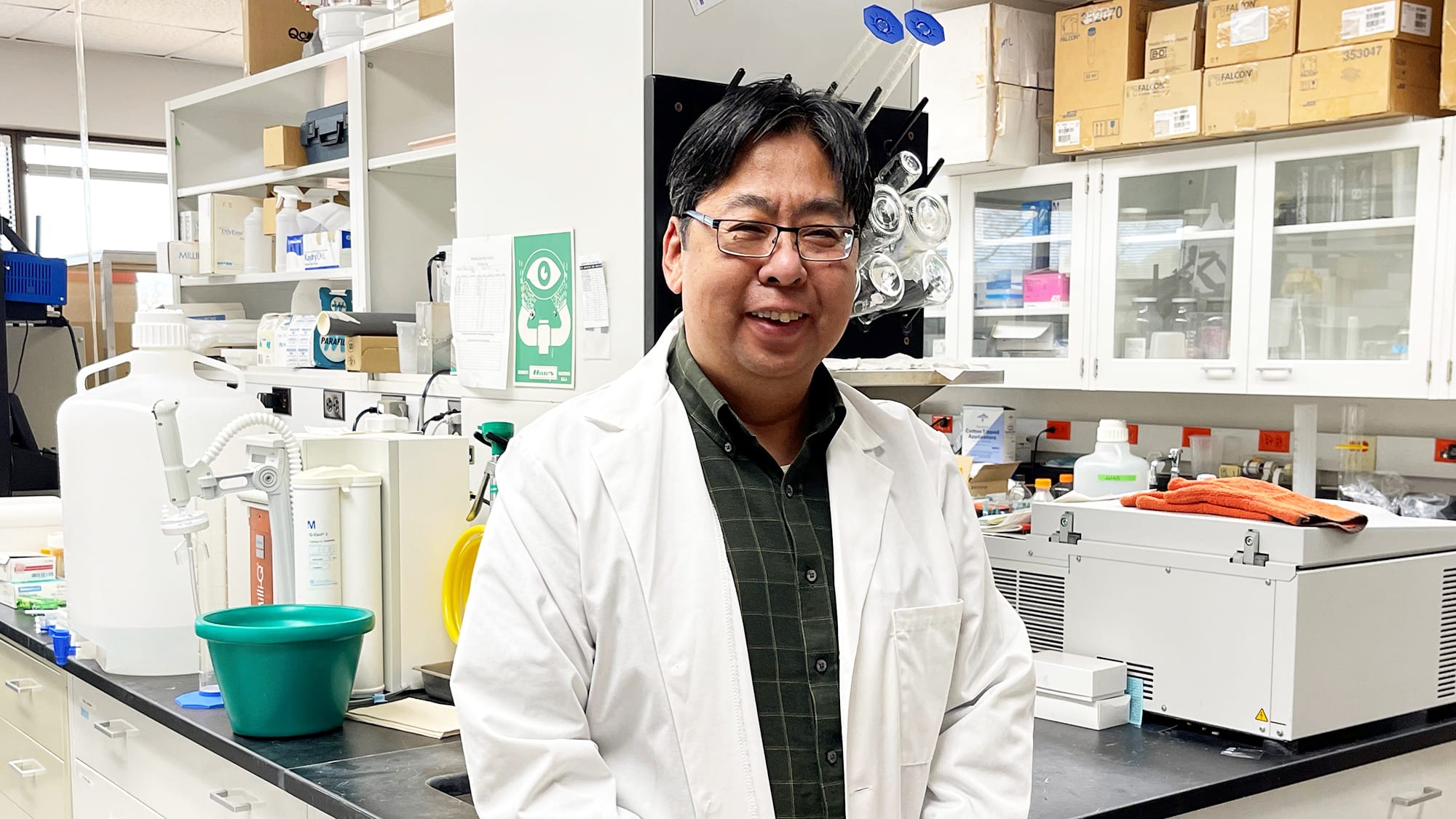UAMS Researcher Awarded $1.8 Million to Study Potential Treatments for Neurological Diseases
| LITTLE ROCK — The National Institutes of Health (NIH) has awarded a $1.8 million grant to Fang Zheng, Ph.D., an associate professor of pharmacology and toxicology at the University of Arkansas for Medical Sciences (UAMS), to continue research that could lead to new treatments for epilepsy and other neurological diseases.
The NIH’s National Institute of Neurological Disorders and Stroke awarded Zheng’s lab $385,995 on March 1, which is to be followed by annual awards of $372,745 for each of the following four years, for a total of $1,876,975 over five years.
Collaborating with Zheng in the study are Paul Drew, Ph.D., and Kevin Phelan, Ph.D., professors in the UAMS College of Medicine Department of Neurobiology and Developmental Sciences, and Fabrice Dabertrand, Ph.D., an associate professor of anesthesiology and pharmacology at the University of Colorado Anschutz Medical Campus in Denver, Colorado. Drew also is an assistant dean for research in the UAMS College of Medicine.
“Dr. Zheng’s research is unique because it focuses on abnormalities of the cerebral circulation as a major contributing factor to epilepsy rather than focusing on neurons as the cause of the disease,” said Nancy Rusch, Ph.D., distinguished professor and chair of the Department of Pharmacology and Toxicology. “His research raises the possibility that treatments directed at restoring normal function to small cerebral blood vessels may reduce the number and severity of epileptic seizures.”
Zheng said initial research has focused on the underlying mechanisms of neurovascular coupling dysfunction, which happens when the connection between blood flow and neurons in the brain stops working normally.
“Neurovascular coupling, a mechanism that matches local neuronal activity to blood flow, is critical to maintain local microenvironment and normal brain function,” Zheng said. “However, normal neurovascular coupling is disrupted in seizure, traumatic brain injury and other neurological disorders. Despite continued high neuronal metabolism, small cerebral arteries and arterioles begin to inappropriately constrict to limit cerebral blood flow to the challenged neurons.”
He said this process, known as the inverse hemodynamic response (IHR), is thought to contribute to brain damage and functional impairment in people with neurological diseases, including Parkinson’s disease and Alzheimer’s disease.
Zheng said he wants to test a theory that seizure-induced IHR is affected by regulatory activity in the cells that make up the lining of the blood vessels. He theorizes that disruption of the activity may reduce susceptibility to seizures.
“The studies rely on complementary areas of expertise pooled by a research team with expertise in cerebrovascular reactivity, epilepsy and neuroinflammation, and neurodegeneration,” Zheng said in his grant proposal.
This research is supported by the National Institute of Neurological Disorders and Stroke of the National Institutes of Health under Award Number R01NS126473.
UAMS is the state’s only health sciences university, with colleges of Medicine, Nursing, Pharmacy, Health Professions and Public Health; a graduate school; a hospital; a main campus in Little Rock; a Northwest Arkansas regional campus in Fayetteville; a statewide network of regional campuses; and eight institutes: the Winthrop P. Rockefeller Cancer Institute, Jackson T. Stephens Spine & Neurosciences Institute, Harvey & Bernice Jones Eye Institute, Psychiatric Research Institute, Donald W. Reynolds Institute on Aging, Translational Research Institute, Institute for Digital Health & Innovation and the Institute for Community Health Innovation. UAMS includes UAMS Health, a statewide health system that encompasses all of UAMS’ clinical enterprise. UAMS is the only adult Level 1 trauma center in the state. UAMS has 3,275 students, 890 medical residents and fellows, and five dental residents. It is the state’s largest public employer with more than 12,000 employees, including 1,200 physicians who provide care to patients at UAMS, its regional campuses, Arkansas Children’s, the VA Medical Center and Baptist Health. Visit www.uams.edu or uamshealth.com. Find us on Facebook, X (formerly Twitter), YouTube or Instagram.
###
